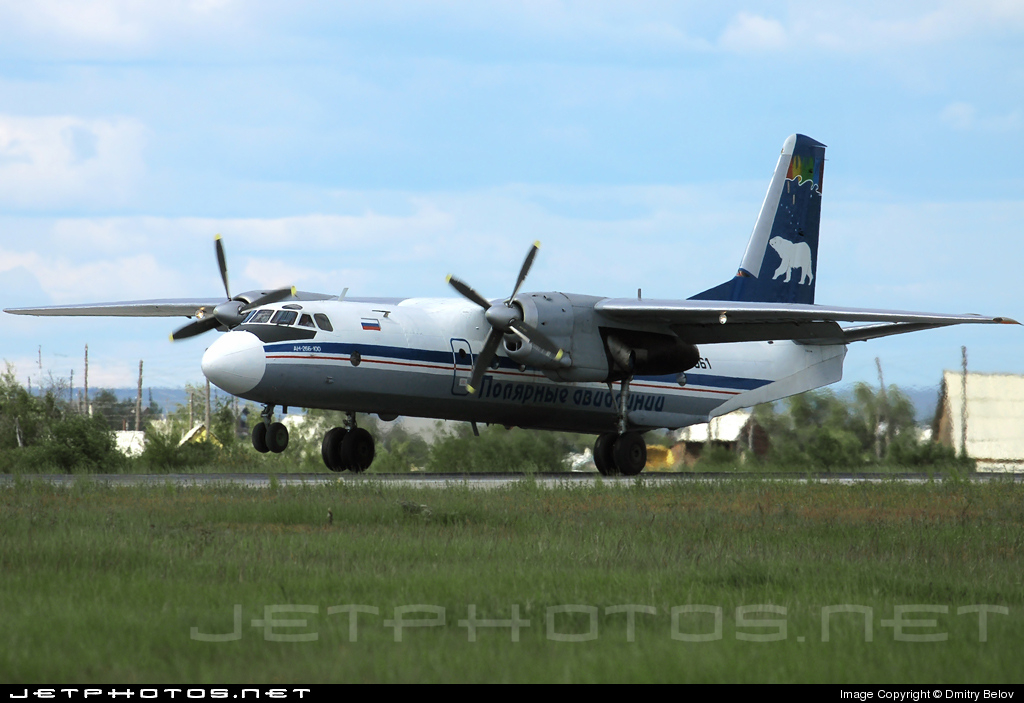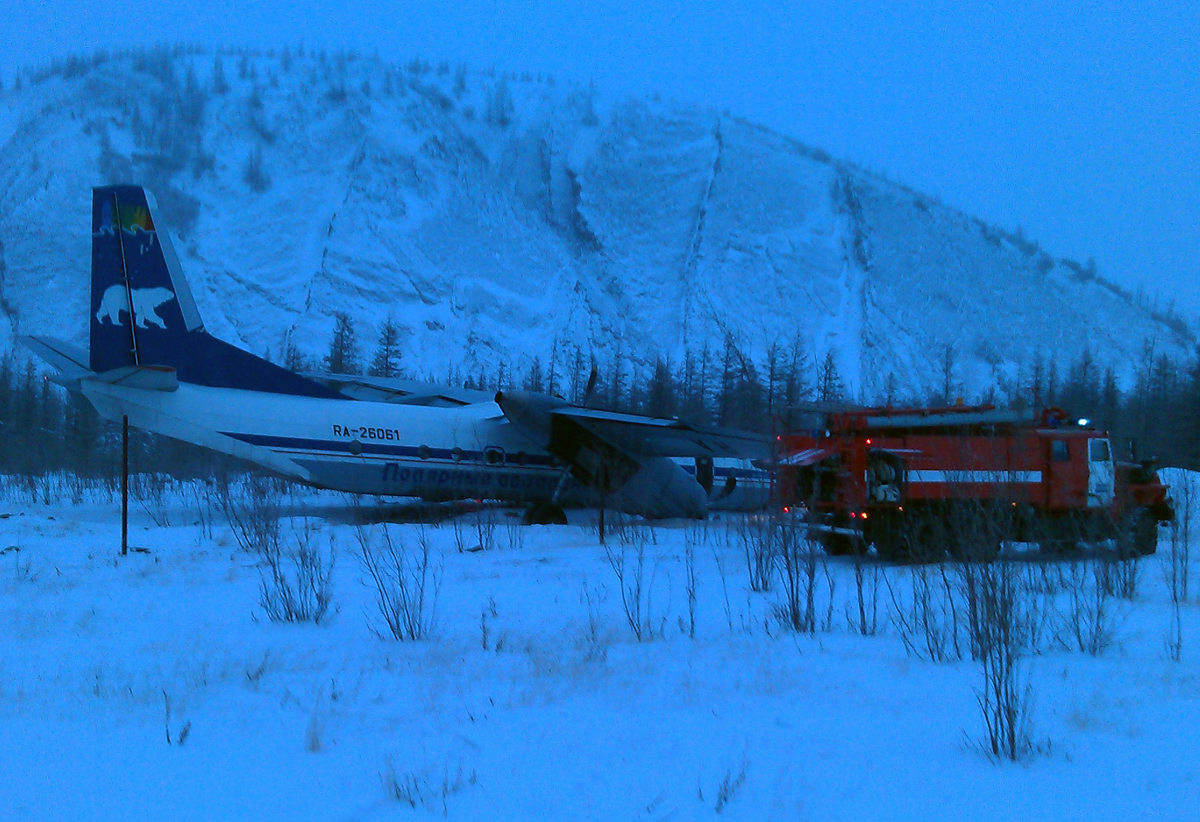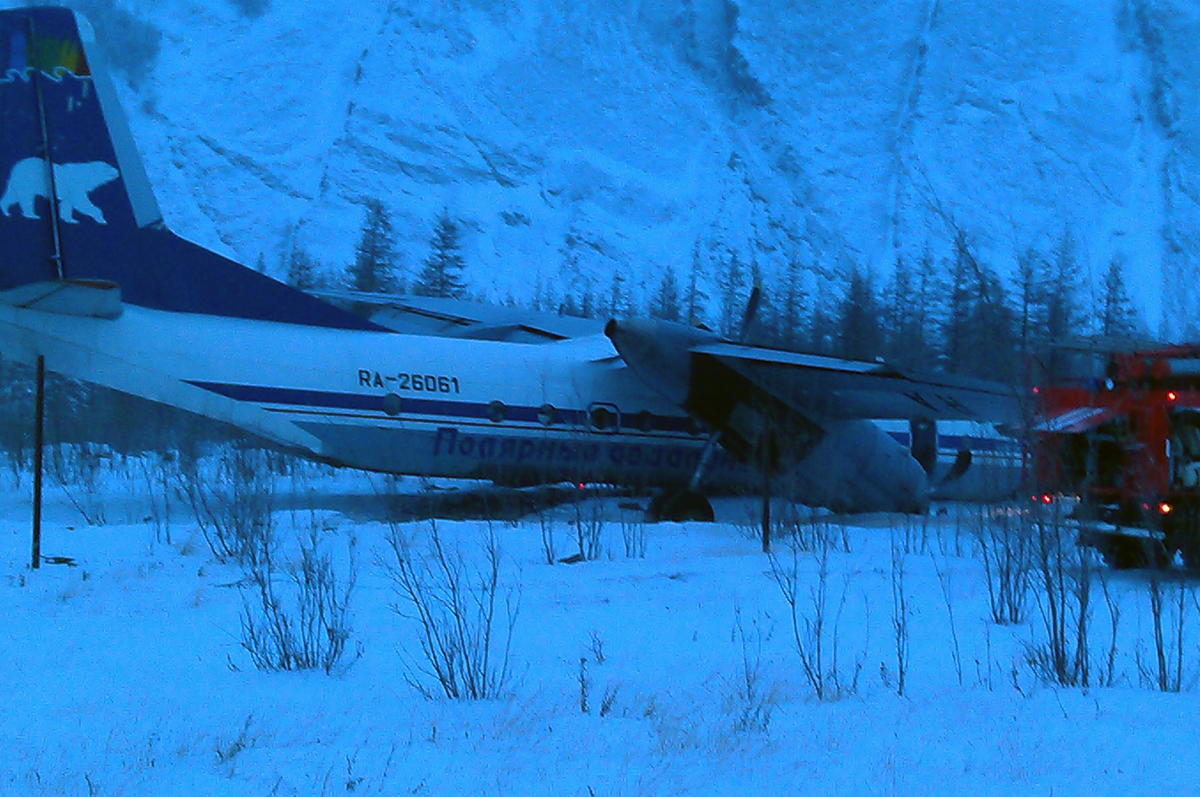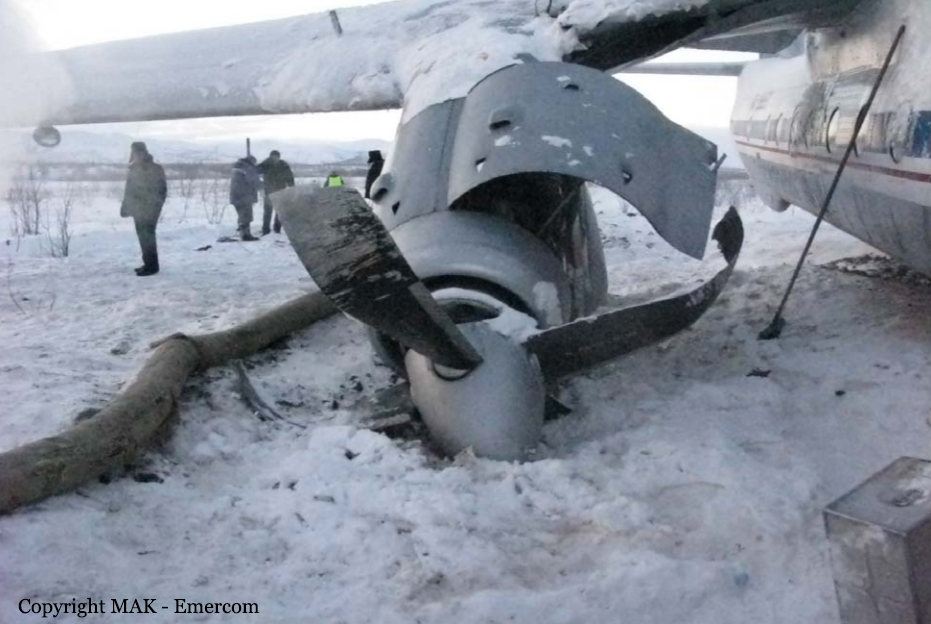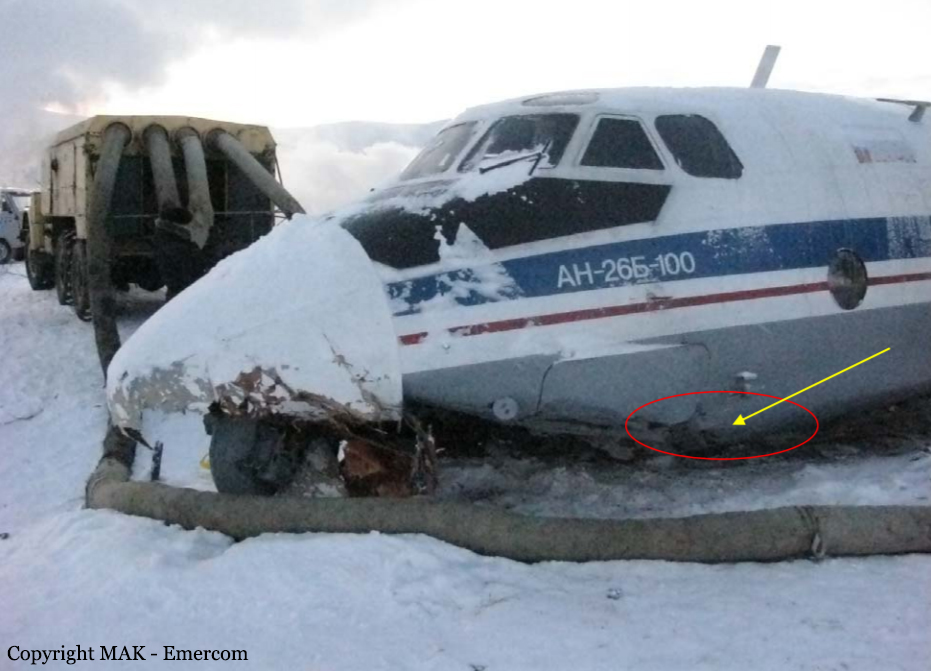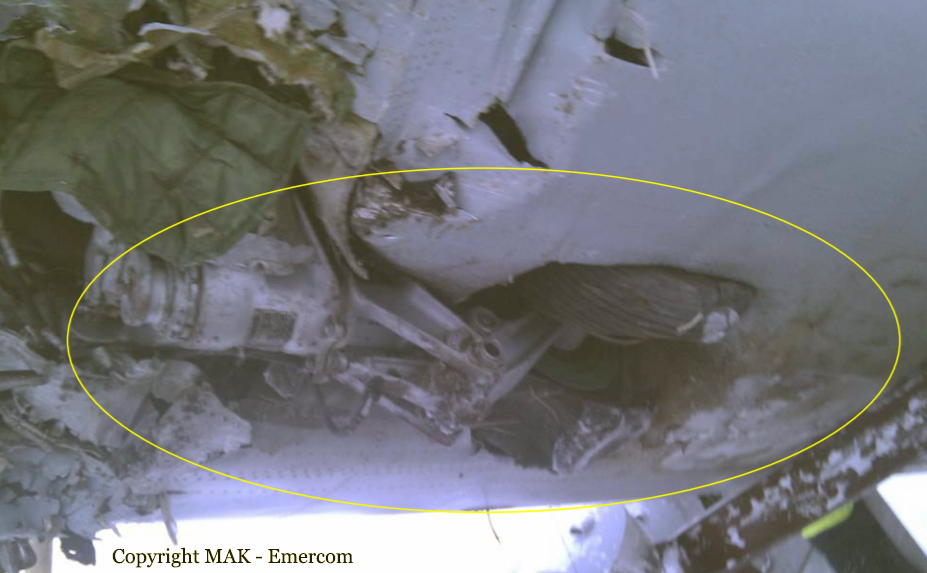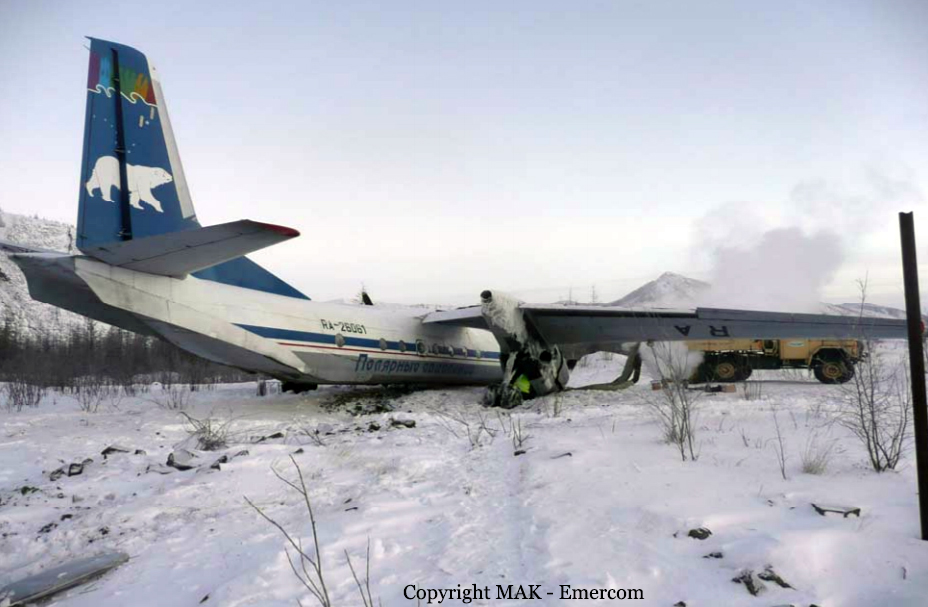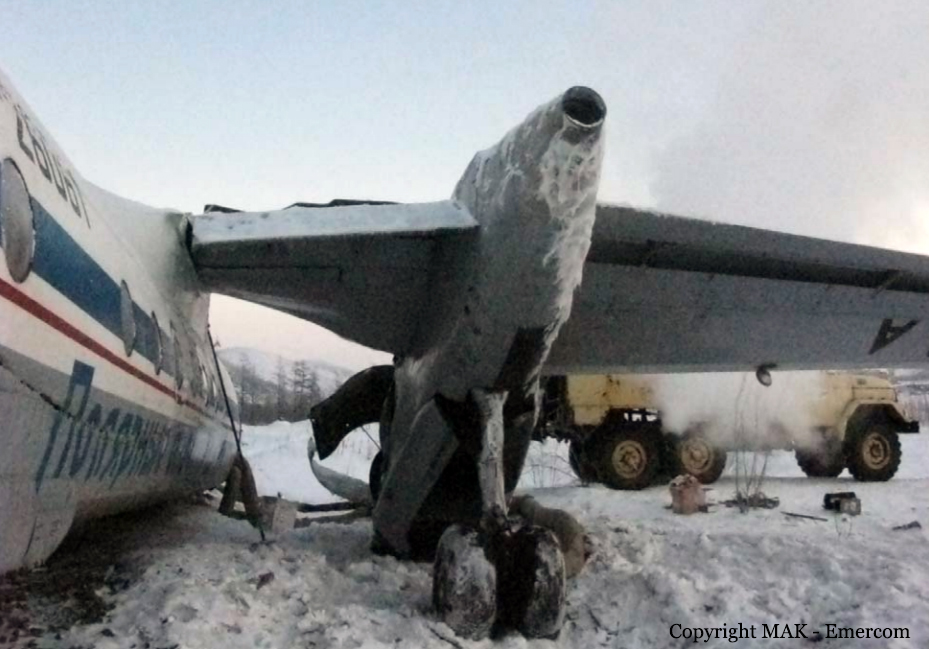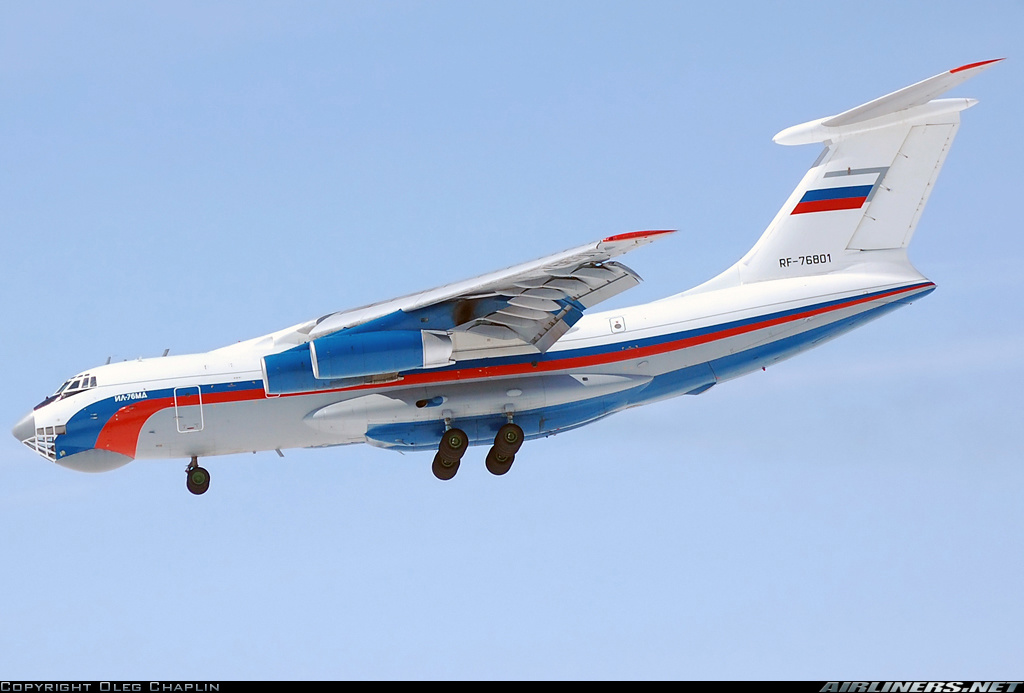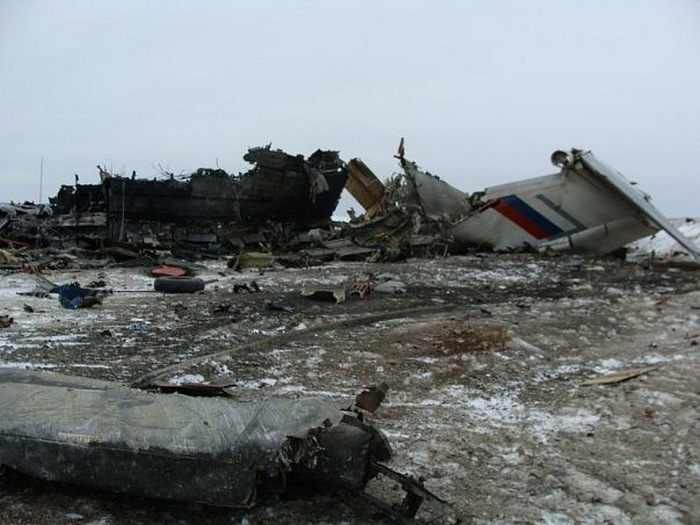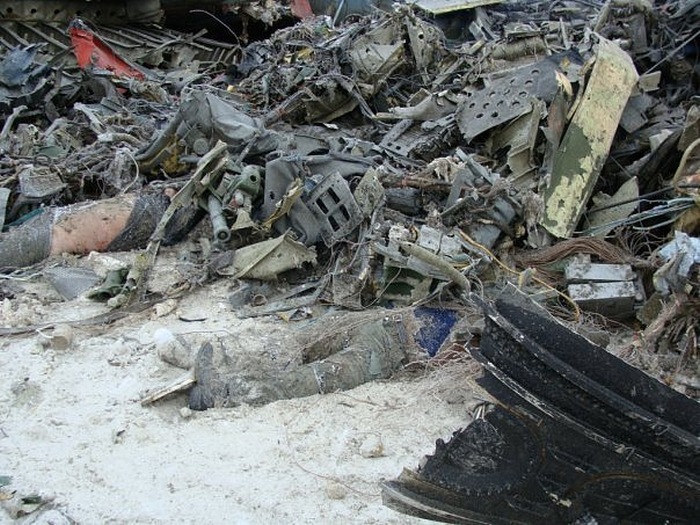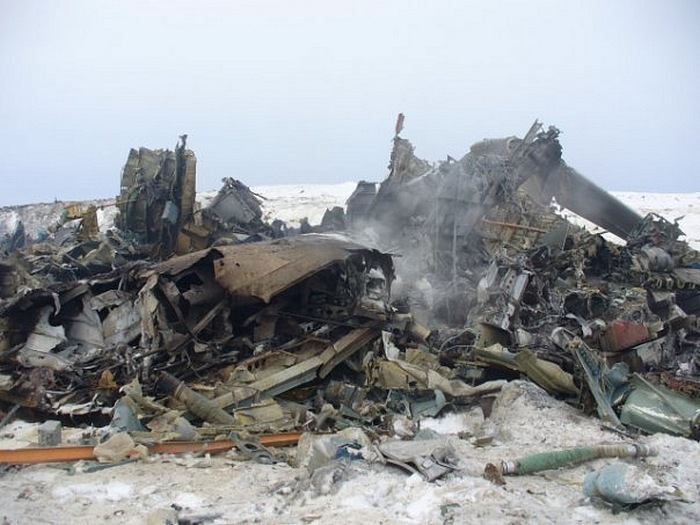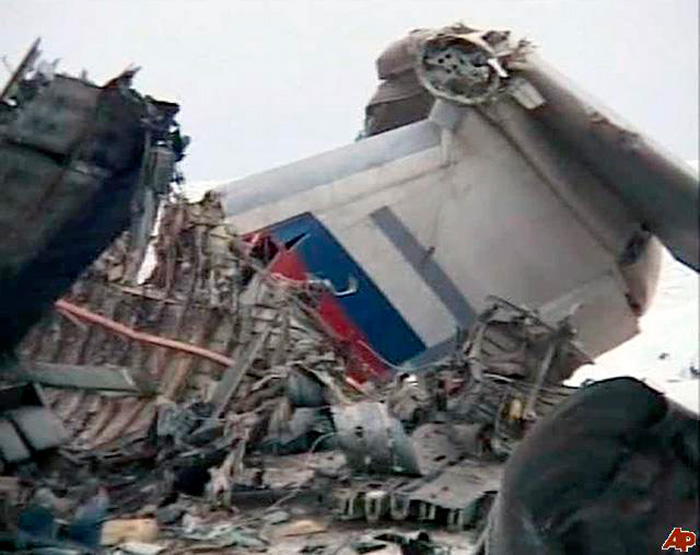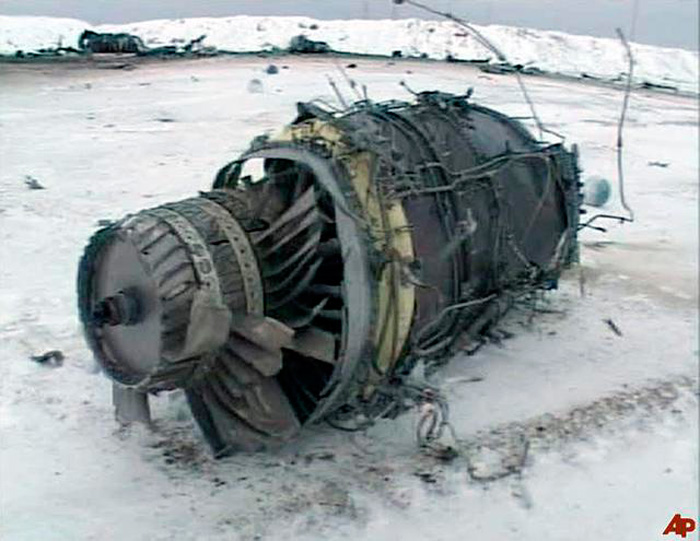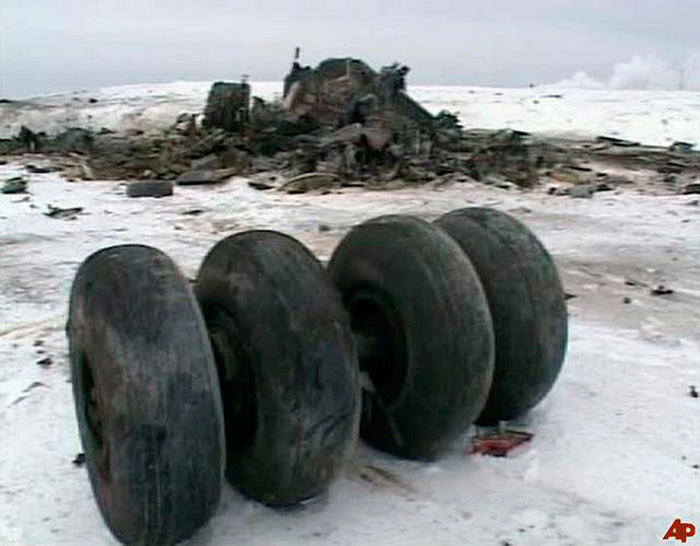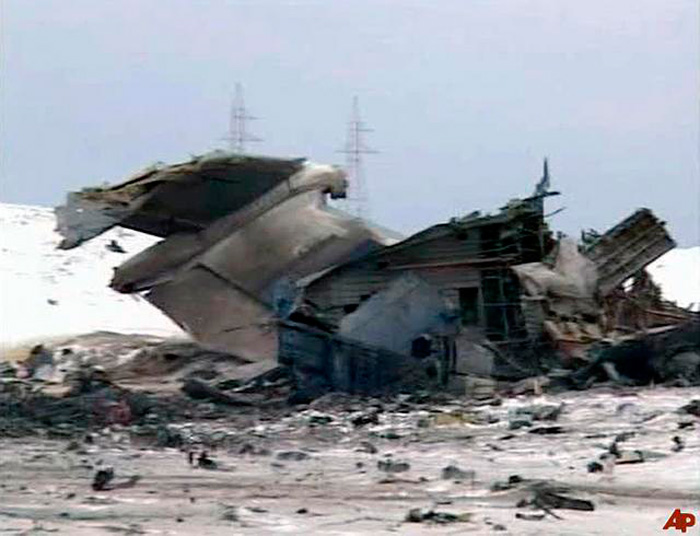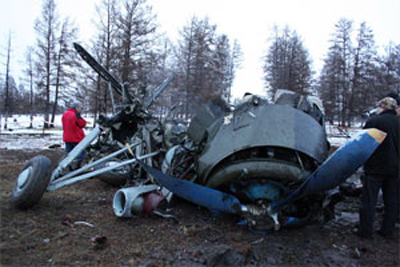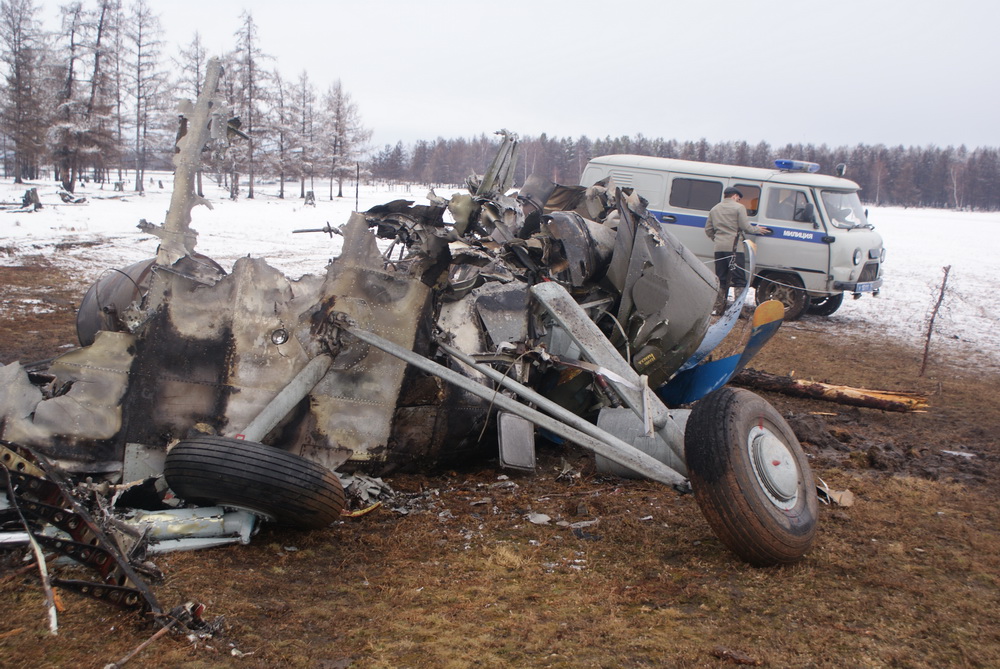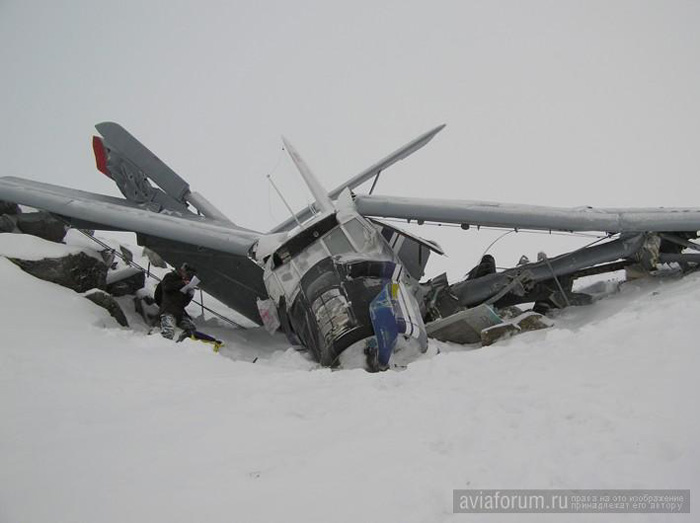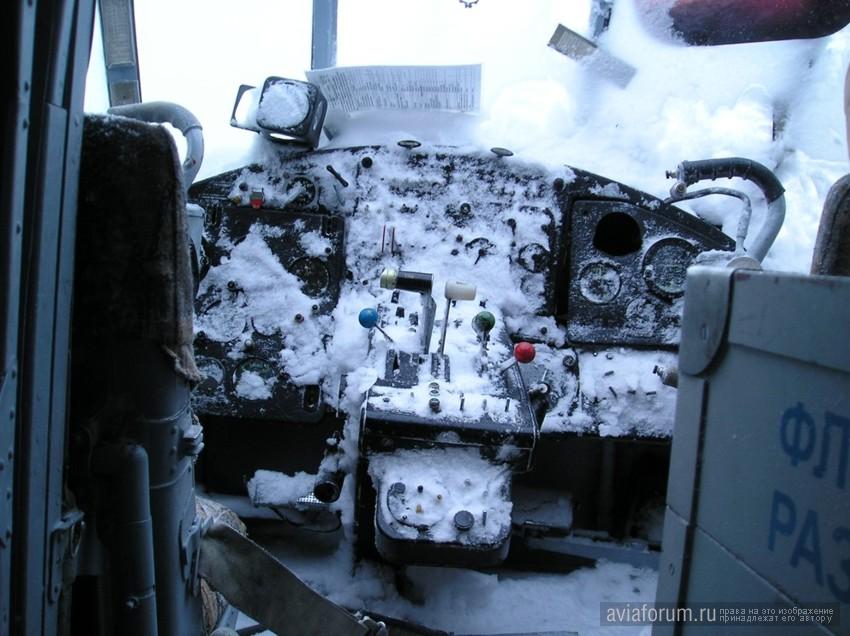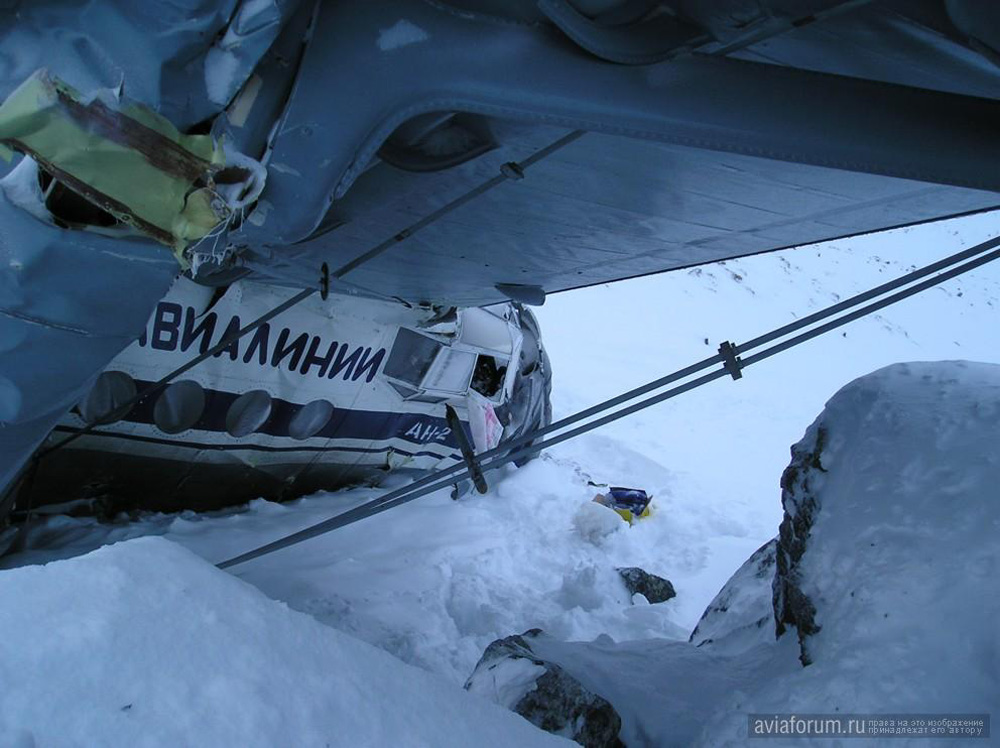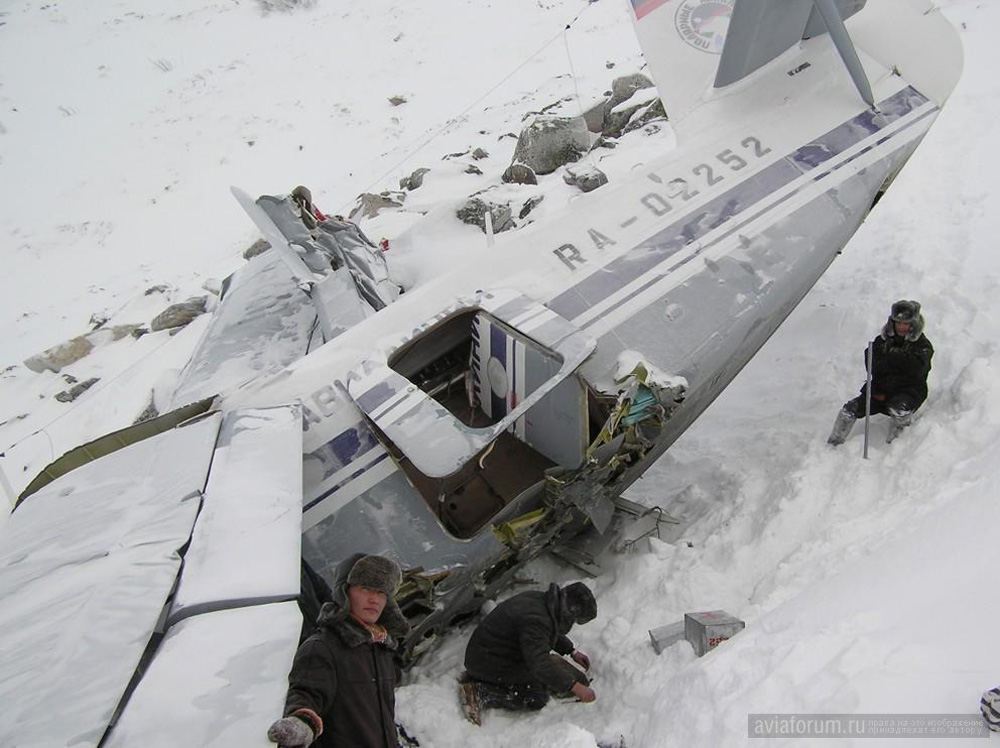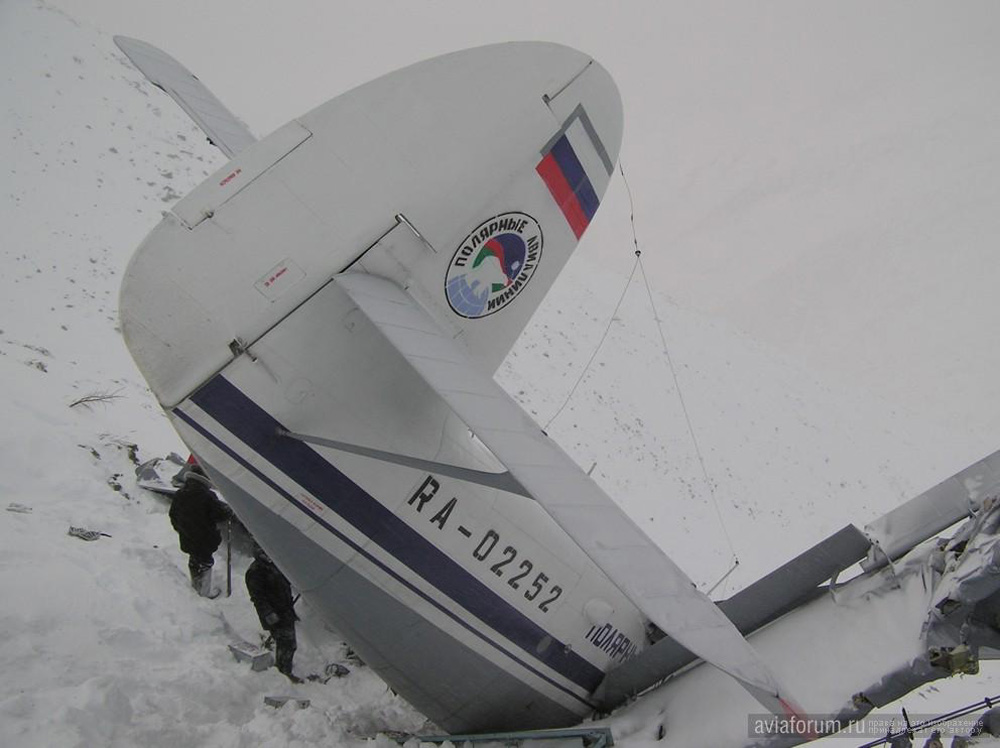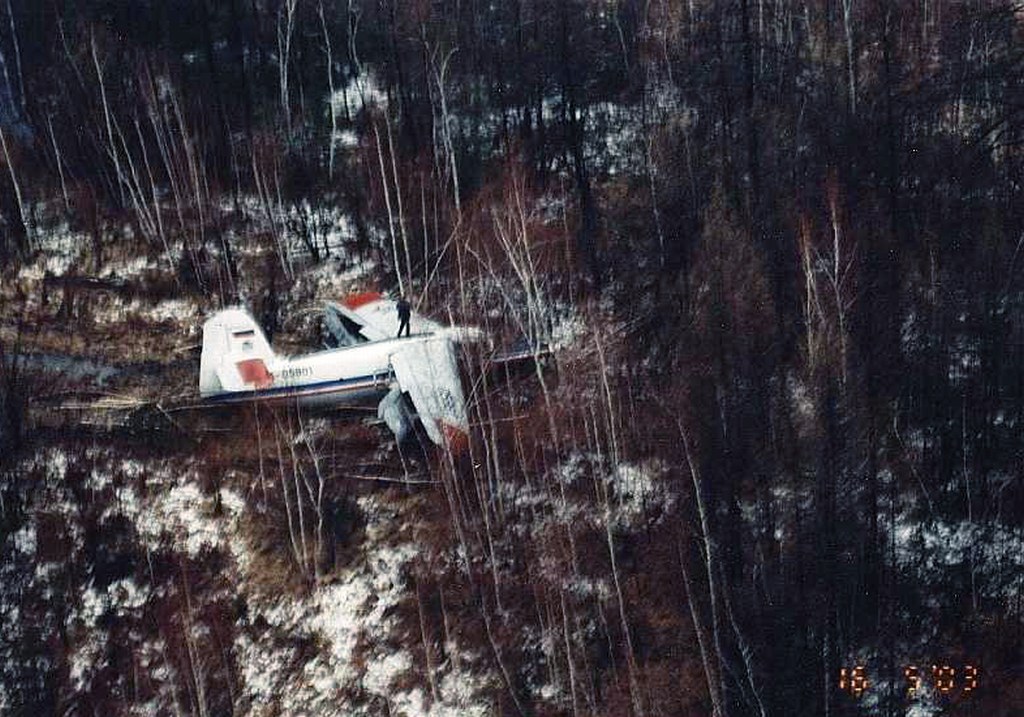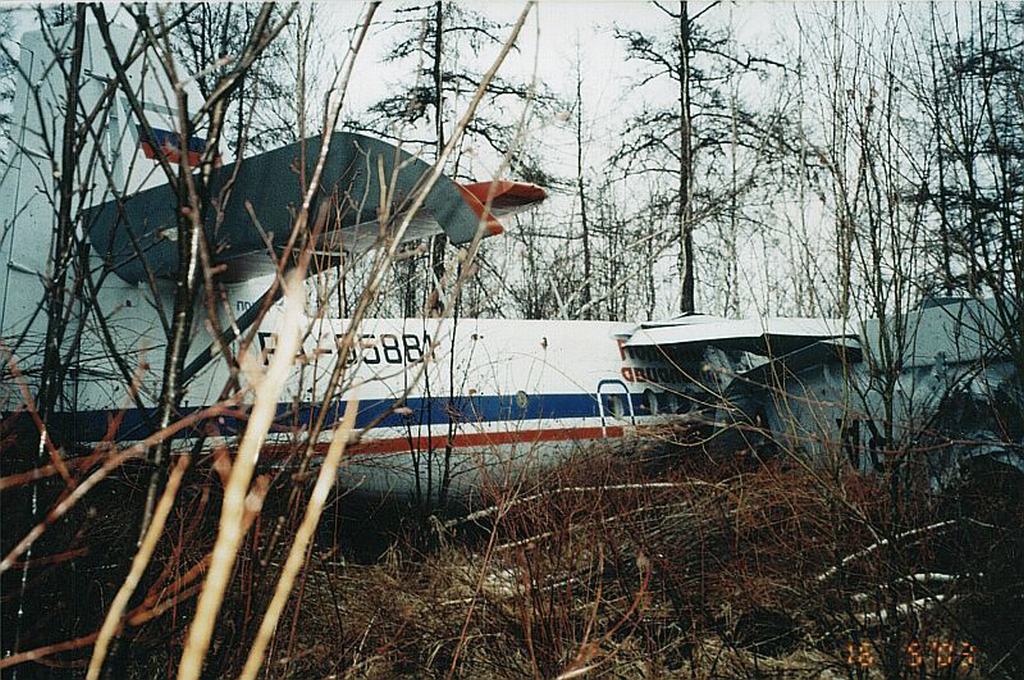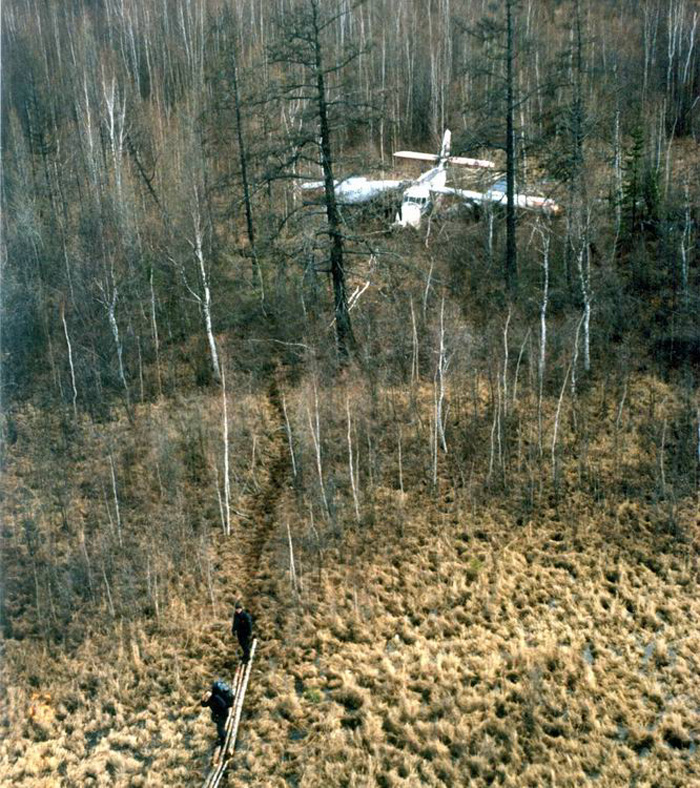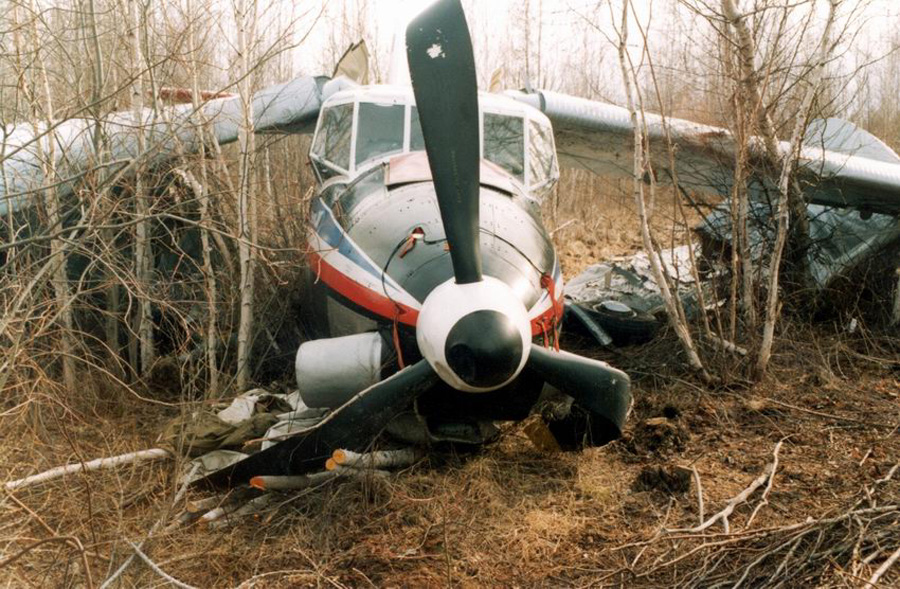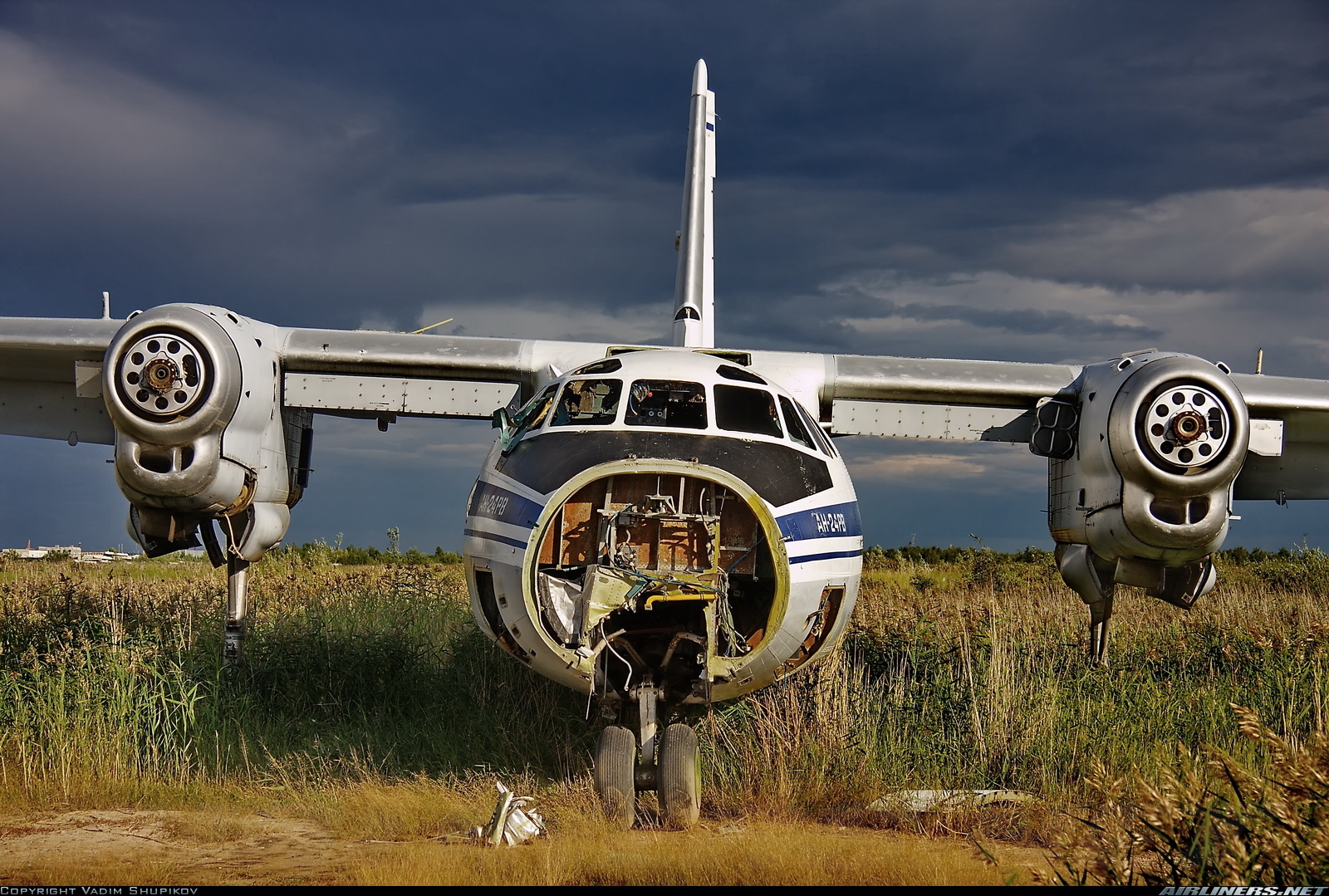Crash of an Antonov AN-26B-100 in Deputatsky
Date & Time:
Nov 21, 2012 at 1431 LT
Registration:
RA-26061
Survivors:
Yes
Schedule:
Yakutsk - Deputatsky
MSN:
111 08
YOM:
1981
Flight number:
PI227
Crew on board:
6
Crew fatalities:
Pax on board:
23
Pax fatalities:
Other fatalities:
Total fatalities:
0
Captain / Total hours on type:
1150.00
Copilot / Total hours on type:
245
Aircraft flight hours:
22698
Aircraft flight cycles:
11257
Circumstances:
Following an uneventful flight from Yakutsk-Magan Airport, crew started the descent to runway 10. On touch down on a snow covered runway, aircraft landed slightly to the left of the centerline. After a course of 350 meters, left main gear hit a snow berm of 20-50 cm high. Aircraft continued to the left, veered off runway and came to rest in snow covered field with its right main gear and right wing severely damaged. All 29 occupants were evacuated safely while the aircraft was damaged beyond repair.
Probable cause:
The non-fatal accident with An-26B RA-26061 aircraft was caused by its RWY overrun that resulted in aircraft structure damage. The accident was possible due to combination of the following factors:
- Pilot's error resulted in approach procedure correction up to the moment of landing resulted in offset approach towards unpaved RWY axis and considerably to the left from its axis;
- Non-compliance of unpaved RWY of "Deputatsky" Airport" condition with Civil aerodrome operation manual requirements RF-94, in part of interface between cleaned and uncleaned surface of unpaved RWY with slope no more than 1:10;
- Nose-left moment during main landing gear movement along interface from recent snow up to 30-50 cm as a result of both left landing gear wheels dipping into snow.
- Pilot's error resulted in approach procedure correction up to the moment of landing resulted in offset approach towards unpaved RWY axis and considerably to the left from its axis;
- Non-compliance of unpaved RWY of "Deputatsky" Airport" condition with Civil aerodrome operation manual requirements RF-94, in part of interface between cleaned and uncleaned surface of unpaved RWY with slope no more than 1:10;
- Nose-left moment during main landing gear movement along interface from recent snow up to 30-50 cm as a result of both left landing gear wheels dipping into snow.
Final Report:
